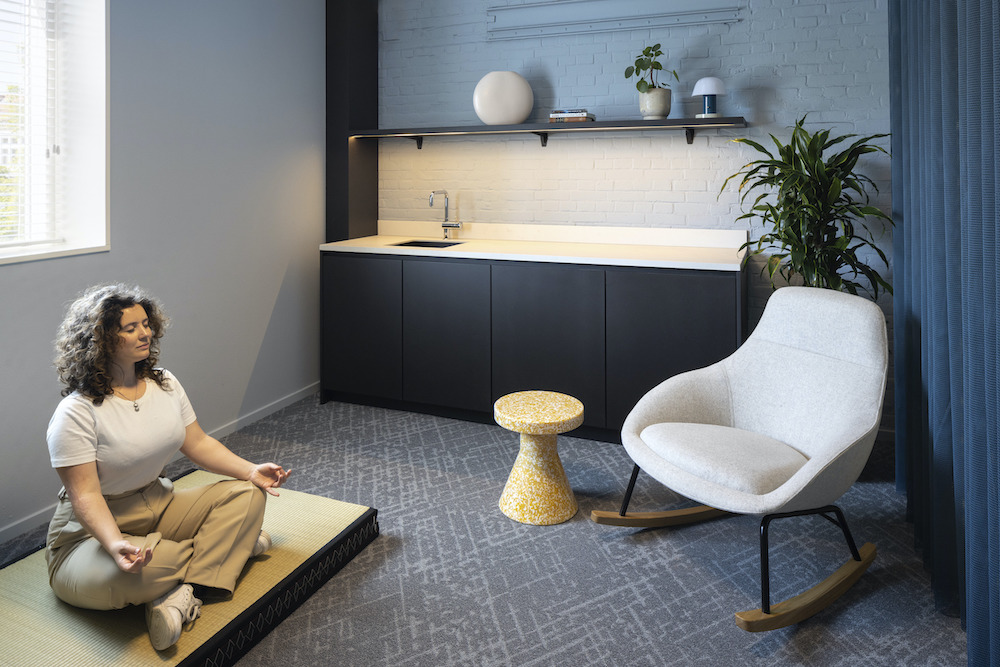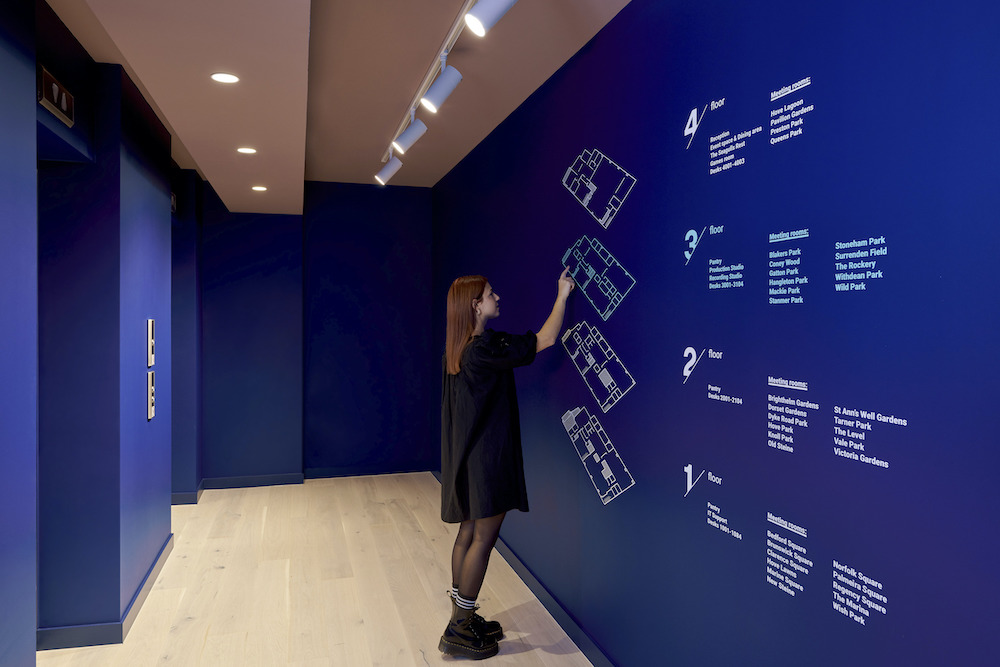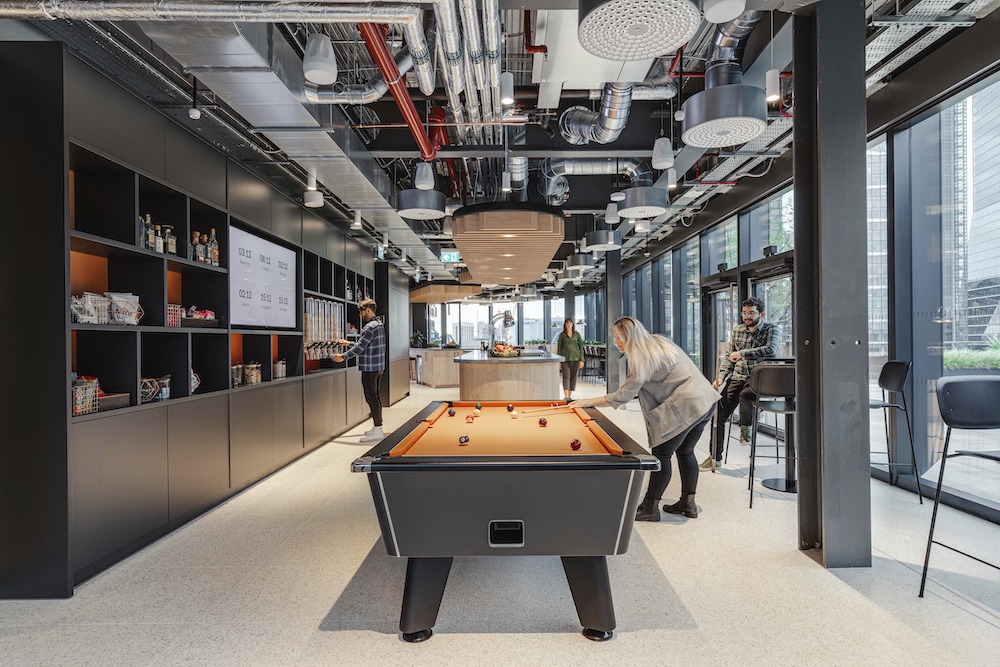- Office design is an essential piece of the puzzle to keep Gen Z and others motivated, engaged, and physically and mentally supported.
- The younger generation wants to see a thoughtful use of technology in the workplace.
- Businesses can learn from and grow with their dynamic young talent by fostering an inclusive, impact-led culture that enables flexibility and career development.
This article was written by M Moser’s Michelle Smith for Work Design Magazine.
Born between 1997 and 2012, Gen Z is the first digitally native generation and is becoming the most diverse and educated. It seems like a winning recipe, doesn’t it? Well, for young people in today’s ever-changing world, there are a multitude of societal and environmental pressures. In the last decade alone, we have experienced a global pandemic, new acts of war and financial hardship. Impacted by the pressure of daily living, Gen Z is a passionate generation willing to challenge previous ideologies and standards.
According to the World Economic Forum, by 2025, one-third of the workforce will be Gen Z, with expectations focused on work-life balance, a sense of community and career progression. The need for quick, professional development goes hand in hand with wanting financial stability in an ever-shifting landscape. Many Gen Zers are now looking for entrepreneurial ways to make extra money, particularly in the digital realm. With this shift in mentality and focus on a more varied, nomadic lifestyle, we need to ensure our workspaces are flexible and inclusive to support and engage Gen Z.
This article explores some of the overall trends we observe as new generations enter the workplace. Of course, one size by no means fits all, and it is important to understand the individual people within an organization before designing for their specific needs.
1. Technology
Fast technological advancements can be overwhelming for businesses; however, for digital natives Gen Z, this rapid change is expected. This innate tech-savviness means they have information at their fingertips like never before — from artificial intelligence to employee reviews and corporate commitments. They no longer take employers at face value and are exposed to more job opportunities, often leaving businesses to compete rather than attract.
The younger generation wants to see a thoughtful use of technology in the workplace. It’s key to design high-tech zones that offer wireless charging, advanced bookings (via apps) and interactive screens, and low or no-tech zones for cognitive respite. Seamless integration is also vital for ease and willingness of use, particularly in a hybrid setting.
2. Progression & Flexibility
Work-life balance has become an essential topic due to the shift in how we work during the pandemic. Gen Zers have had more exposure to working from home early in their careers, setting greater expectations for a future of hybrid working. Whilst flexibility and remote work remain important to Gen Z, career advancement is a top priority.
Professional development and mentorship programs are invaluable early on in a career and are most effective face-to-face. Coming into the office can be crucial to learn by osmosis, encouraging young people to assimilate and build mutually beneficial rapport with colleagues. As office designers, we can support in-person interactions by focusing on movement throughout spaces and offering a variation of typologies. Focus, collaboration and socializing should be at the heart of the design. Gen Zers love to be flexible, using movement to stay inspired and motivated. They accept the idea of moveable furniture, but the practice of moving these pieces for individual use is very unlikely. Flexible settings are often seen as more of a communal activity. Therefore, a focus on personal work settings is critical, including sit-to-stand desks, ergonomic chairs and a user-friendly tech set-up that easily connects to the rest of the workplace.

3. Wellness and Sustainability
80% of Gen Z is looking for companies that implement policies rather than just talking the talk. One of the leading factors for Gen Z quitting their jobs is that company values do not align with theirs. There is an expectation that ESG (Environmental, Social, Governance) practices are well in place to address wellness, sustainability and inclusivity. Gen Z is keen to see real change, so education, transparency, and actively investing in these issues is fundamental.
Gen Z also wants more collaborative and meaningful work. They have entered the workforce when mental health discussions are at an all-time high. Anxiety and depression among young people have skyrocketed, and the potential for workplace burnout is more prevalent than ever before. Close to three-quarters of the younger generation also see climate and sustainability as critical considerations, according to a 2021 Pew Research Central survey. This general awareness has shifted the power of young employees to set boundaries and reconsider their priorities. They now ask, “Am I right for the job?” and “Is the job right for me?”
Implementing the following design features can help address these needs in the workplace:
- Amenities that encourage physical movement, such as gyms, internal staircases, or end-of-trip facilities to encourage cycling to work.
- Changing rooms, games rooms and spaces for other recreational activities to support movement, socializing and relaxation.
- Views towards the outdoors, greenery, and natural light to boost mood, productivity and regulate the circadian rhythm.
- Devices that monitor air and water quality contribute to a healthier work environment.
- Acoustic treatments such as sound absorbing materials or sound masking in open plan areas to reduce noise disturbances.
- Easily adjustable lighting, blinds/curtains, and ergonomic furniture to support productivity and varied tasks.
- Waste measures such as recycling and reuse solutions and composting.
- Products that have been reused or repaired, particularly furniture.
- Low VOC materials.
- Certifications such as LEED or the WELL Building Standard.

4. Diversity, Equity and Inclusivity (DEI)
Wanting to belong is one of three top priorities for Gen Z. They are also socially conscious, with 83% valuing a company’s commitment to allyship, diversity and inclusive cultures. 167% are more likely to recommend their companies to other potential employees and be more committed and productive if they see positive integration.
One prevalent topic in the design realm is neurodiversity, the notion that everyone experiences, learns and behaves differently. Approximately 15-20% of the population qualify as neurodivergent. Neurodivergent groups might have ADHD, Autism, Dyspraxia, Dyslexia and more. The key is to create supportive environments that meet the needs of every individual that inhabits them.

The below adaptations can help bring creative, authentic, and diverse perspectives to the forefront of your business:
- Offer a variety of settings for different psychological needs.
- Assess proxemics and how this can be used to support interactions.
- Provide all gender, universal and super-loo restrooms.
- Include prayer and parent rooms.
- Create variation for the senses throughout the day.
- Ensure the office is clear of clutter, well organized and has clear wayfinding.

Fast becoming the largest generation in the workforce, there is no doubt that Gen Z is set to evolve the future of work. Office design is an essential piece of the puzzle to keep them and others motivated, engaged, and physically and mentally supported. However, this must stand hand in hand with the right organizational policies, operations, and access to HR. Businesses can learn from and grow with their dynamic young talent by fostering an inclusive, impact-led culture that enables flexibility and career development.


 Dr. Gleb Tsipursky – The Office Whisperer
Dr. Gleb Tsipursky – The Office Whisperer Nirit Cohen – WorkFutures
Nirit Cohen – WorkFutures Angela Howard – Culture Expert
Angela Howard – Culture Expert Drew Jones – Design & Innovation
Drew Jones – Design & Innovation Jonathan Price – CRE & Flex Expert
Jonathan Price – CRE & Flex Expert












